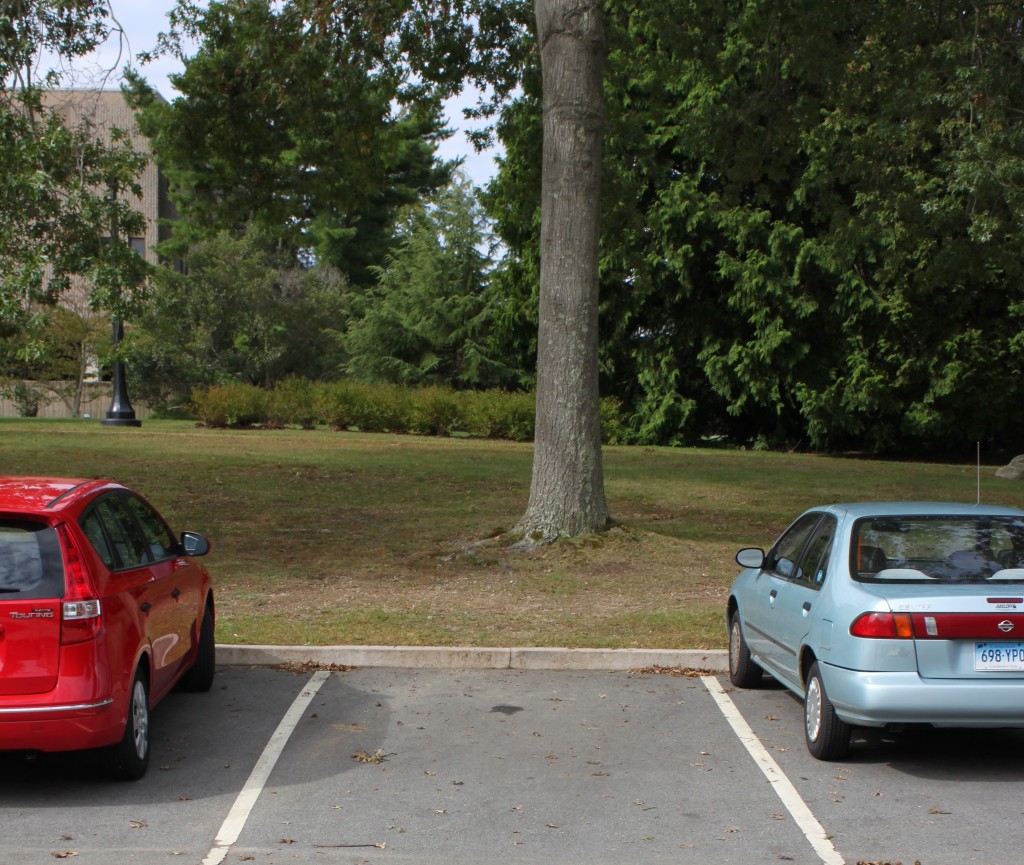Over the summer, Conn has implemented numerous changes to campus, including the new paths in front of Smith, the boisterous construction site that has rerouted our roadways and the chic new decorations in Harris. Many of these changes are barely noticed by students. One set of changes, however, has sparked some controversy: the new parking regulations.
The new parking policy means, among other things, that freshmen can no longer have cars on campus.While most upperclassmen may not have noticed this change, the incoming students certainly have a lot to say about the policy. One freshman claimed, “I was disappointed that we couldn’t bring cars to campus. If you come from a state that is farther away, it can be difficult to get a ride home.”
“Freshmen year we went to all these places the camel van doesn’t go,” remembered Nora Swenson ’12. “And we don’t live on a campus where we can easily walk into town.”
With the new regulations, the sophomore parking is now decided by a lottery system; half of the students receive Upper Parking and the other half receives Lower Parking.
This change has left some sophomores frustrated with their results.
One sophomore said, “I don’t think it’s fair that it costs just as much to park at the AC as it does to park on main campus. I just took my car home instead of registering it. It just didn’t seem worth it.”
Upper Parking consists primarily of spaces in North lot, South lot and the gravel lot. There are also some spots available outside of the Plex, Lazarus House, Earth House and 360. Lower Parking consists of spaces at the Athletic Center as well as spaces at River Ridge, Winchester and Abbey House. Lower Parking used to be mandatory only for freshmen, while the incoming sophomores would be upgraded to park in Gravel, North, or South lots. Now those lucky sophomores who receive Upper Parking in the lottery can even park in spaces outside of the Plex, a privilege once reserved for seniors. But those granted Lower Parking have to repeat their previous year’s walk across the street every time they use their car. Sophomore parking assignments remain the same all year.
Director of Campus Safety Stewart Smith explained the reasons for the parking reforms. “The changes are part of a long-term plan to make the campus more pedestrian friendly, combined with a student-led initiative to make the campus more environmentally responsible.”
While Connecticut College strives to be environmentally friendly in every facet of campus life, not all students agree that limiting the use of cars is a good idea.
“It comes down between whether college policies are going to tell students they need to be environmentally responsible in certain ways, or if they can present the information and let the students decide for themselves,” advocated Laura Makl ’12.
Smith added, “The new parking guidelines have their foundation in an initiative led by the 2009-10 SGA, which was taken up by the parking committee during the 2010-11 year, with participation from the 2010-11 SGA. The new parking regulations are a result of that process.”
The senior privilege of having the closest parking spaces to the dorms has also been done away with. The central lot between Larrabee House and Smith House is now completely faculty and staff parking, as are half the rows outside of the Plex. Yet even the remaining spaces are hard to come by, as the majority of upperclassmen have the option for Upper Parking, and spots are no longer reserved for seniors.
Amanda Eggert ’12 noted, “As someone who walks past the spots outside of Morrison and Hamilton, I always see empty faculty and staff spots all morning. And if they’re full it’s only because students are parking illegally.”
Smith said, “The goal was to re-position parking to align with the current population.”
There is, though, one element of the new parking regulations that has been better received, namely that students can park in faculty and staff spaces weekdays between 5 PM and 2 AM.
In the past students could only park in faculty and staff spaces on weekends. Allowing students to park in closer spaces in the evenings adds greater convenience for those students who may need to drive over to the library, down to the Athletic Center or even just to a friend’s dorm when it gets colder out. But the reality of the situation is that if students are already parked in the gravel, North, or South lots, walking over to their car may take just as long as it would to walk to their ultimate destination.
When asked about the success of the new parking regulations, Smith said, “The new parking system is in line with the College’s long-term goals. It’s been somewhat of an adjustment for some students, but as a whole the campus community seems to be transitioning well into the new system.” •









